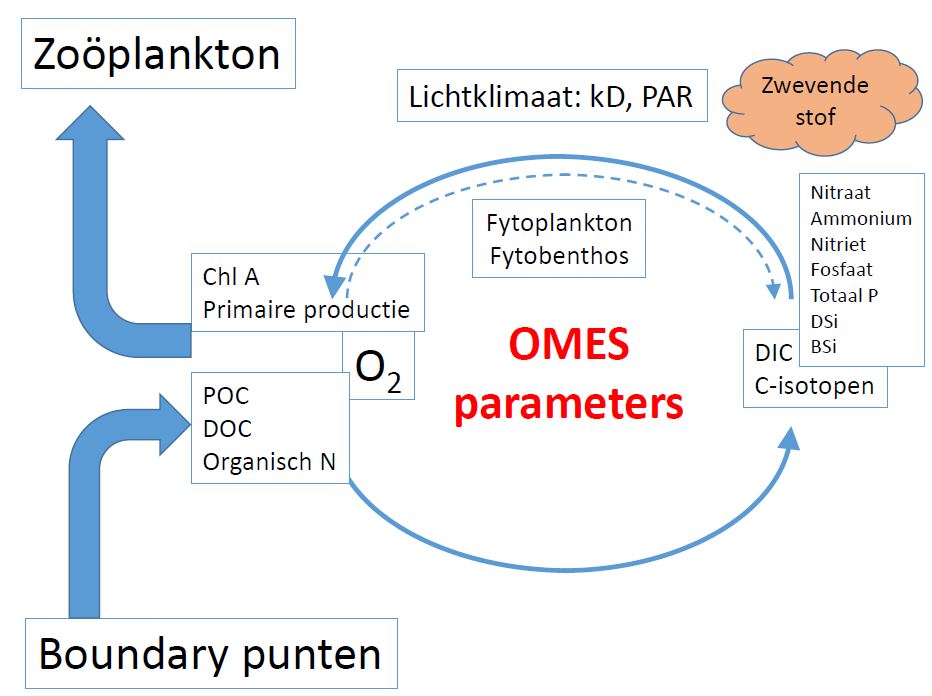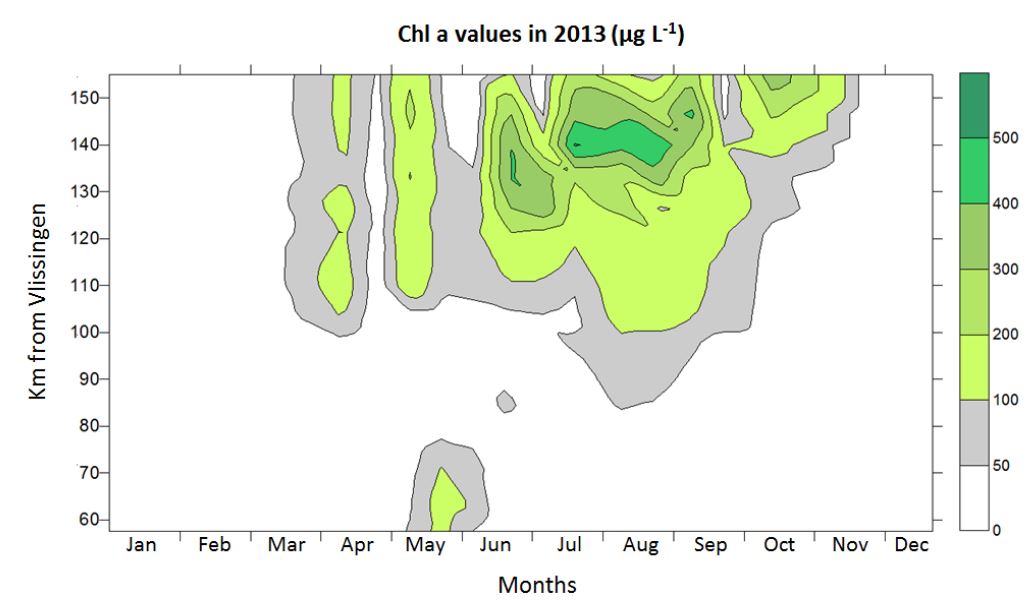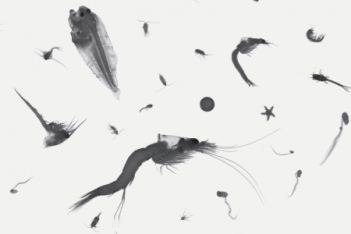source: Symposium "De schelde door de getijden heen"
Oxygen | Oxygen is essential for all higher life, and thus a good indicator for the state of the estuary. It is the result of oxygen consumption (by physical aeration and primary production by algae) and oxygen demand (mainly bacteria). Oxygen levels were rising over the last decade. While in the 90's all areas of the Scheldt had to deal with severe oxygen deficiency (< 2.5 mg/l), these problems have completely disappeared in recent years. In 2006, for the first time since the start of OMES, oversaturation occured. Anno 2013 over-saturation is very frequent in the summer, and extremely high values of up to 195% oxygen saturation are recorded. This indicates excessive algal blooms and point to the fact that the ecosystem is not in equilibrium. This very strong growth of algae did not lead to typical eutrophication problems as nocturnal anoxia or oxygen deficiency when the algae mass dies. |
Phytoplankton depends on light and nutrients such as nitrogen, phosphorus, and silica, for its growth. The amount of light and nutrients can differ during different times of the year. Increased sunlight is the main factor that determines the growth of phytoplankton in the spring. Phytoplankton can be measured as chlorophyl concentrations. High concentrations of chlorophyl are measured in spring and summer. Growth starts in spring with the increased sunlight and the presence of silica. when silica is depleted, algae (diatoms) die and other algae appear (depending on N and P) in summer. If N and/or P are exhausted, the bloom disappears again (autumn). | |
Nitrogen is an essential product for algae growth. N is present in the Sea Scheldt in such large properties that it can cause extensive blooms with potential negative effects: eutrophication. In the Scheldt, very large blooms do not occur, because of the bad light climate. All these N-loads can however eutrophicate the coastal areas, where light climate is better. MONEOS defines a maximum export of total inorganic nitrogen (TDIN) from the estuary to the coastal areas. The composition of TDIN has changed over the years. In the 90’s, ammonia was a huge component in the total N concentration. As oxygen increased, ammonia was transformed in NO3, causing problems. Nowadays, because there is a drop of ammonia and nitrate (by water treatment), the concentration of N is lowering in the estuary. | |
Zooplankton | The extension of the long‐term observation series (1996‐2012) for crustaceans (copepods and cladocerans) shows that the zooplankton community in the Scheldt has changed substantially over the course of the OMES observation period. With time, calanoid copepods have increased in abundance in the fresh water zone, while no trend in abundance was observed at the brackish water zone. For copepods, this increase mainly concerns the calanoid Eurytemora affinis, which now reaches up till 90 % of copepod abundance in the fresh water zone. In parallel to the development of E. affinis in the freshwater zone, the mesozooplankton community composition has substantially changed, as cyclopoid copepods and cladocerans have decreased in abundance. These observations gave rise to the hypothesis that cyclopoids and cladocerans, which were abundant upstream before 2007, are less sensitive to poor water quality than calanoids. |




